Pilots who have shot down airplanes from all three axis powers

Here is an interesting and little-known fact: Only three American pilots are reported to have shot down at least one plane from each of the Axis powers (i.e., Germany, Italy, and Japan). There’s a simple reason for that, and it is central to the name of the conflict: “World War II” means just that—a war that encompasses the entire world. The opposing side occupied both sides of the globe. Although Berlin is technically only 5,500 miles from Tokyo in a straight line, all of Asia and Eastern Europe separates them, and as a rule, fighter pilots would do battle in one hemisphere/theater or the other, not both. Plus, it’s entirely possible for a pilot to be in the European Theater of Operations (ETO) and never see an Italian airplane, much less a Japanese aircraft, or a high-scoring ace in the Pacific Theater of Operations (PTO) never running across a German or an Italian plane. A pilot can’t shoot down what isn’t there. It took an unusual combination of circumstances for a pilot to bag one each from all three Axis players. But three did.
MAJ. ALBERT “AJAX” BAUMLER
The first man to accomplish this feat was Albert “Ajax” Baumler. You probably won’t find a man like Baumler sitting at any new millennium Air Force officers’ club. He defined the colorful, Maverick type of image the public has of fighter pilots but wouldn’t have made it into the current officer corps. He not only marched to his own drum but blazed a few trails of his own. Baumler washed out of Army Air Corps (AAC) pilot training in 1936 because of his “failure to demonstrate proper flying proficiency”; he had taken off in a trainer that had nearly empty fuel tanks and had to make a deadstick landing. It seems Baumler just shrugged his shoulders and went to United Airlines, where he got a commercial pilot’s license.
هذه القصة مأخوذة من طبعة October 2019 من Flight Journal.
ابدأ النسخة التجريبية المجانية من Magzter GOLD لمدة 7 أيام للوصول إلى آلاف القصص المتميزة المنسقة وأكثر من 9,000 مجلة وصحيفة.
بالفعل مشترك ? تسجيل الدخول
هذه القصة مأخوذة من طبعة October 2019 من Flight Journal.
ابدأ النسخة التجريبية المجانية من Magzter GOLD لمدة 7 أيام للوصول إلى آلاف القصص المتميزة المنسقة وأكثر من 9,000 مجلة وصحيفة.
بالفعل مشترك? تسجيل الدخول

Keeping 'em Flying!- The new generation of warbird pilots, restorers and mechanics
The new generation of warbird pilots, restorers and mechanics. Nearly 80 years after the end of World War II, the fighters, bombers, and trainers that defended freedom continue to enthrall and inspire audiences at airshows, thanks to generations of warbird pilots, maintainers, restoration specialists and collectors. In our September, 2022 issue we introduced you to the young warbird pilots, maintainers and restorers who are already beginning to displace more "experienced" warbird fliers and fixers.

The Corsair Maker- Bringing the Vought Corsair to the fleet was a daunting challenge that spanned nearly three years.
When the first production Corsairs exited the Stratford factory in June 1942, Guyton, as seen here, was tapped to manage the flight and production test program. Armament was improved to six wing-mounted .50s, displacing the wing fuel tanks now placed forward of the cockpit which necessarily was moved rearward by 32 inches. Overall length was increased, armor plate added, landing, arresting and tail gear improved, aileron control enhanced, and a new version of the R2800 engine was incorporated. But those significant improvements unearthed numerous idiosyncrasies that would take an extended period to make the Corsair acceptable for carrier operations
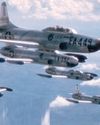
STARFIRES Over Korea
F-94 pilots tangle with MiGs
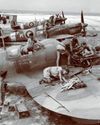
Training Mission
BY THE TIME THIS TRAINING SCENE WAS RECORDED in Canne, Italy, in July 1944, Allied Yugoslavian airmen had several years of experience working side by side with the RAF.
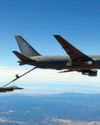
KC-46A PEGASUS
Next generation aerial refueler
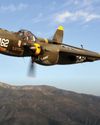
"SATAN'S ANGELS" ACE - Tales from a P-38 pilot in the South Pacific
\"AS A KID GROWING UP on the bow of my father's tugboat, hauling oil from Seattle to Alaska, I had a lot of time on my hands.
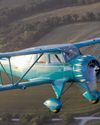
WACO YKC - Stunning and Ultra Rare Golden Age Cabin Flier
BETWEEN THE IMPLEMENTATION of the Air Commerce Act of 1926 and December 31, 1948, all U.S. registered flying machines sported an N-number, much as they do today, the \"N\" being an internationally recognized identifier for the United States. During that period, however, an additional letter-identifier followed the \"N.\" Depending on their category, they were registered in the NC (Commercial), NG (Glider), NL (Limited), NR (Restricted, usually meaning race airplanes), NS (State government), and, finally, NX (experimental).
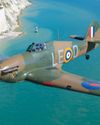
BADER'S HURRICANES
Double amputee fighter ace Douglas Bader and his Battle of Britain Hurricanes
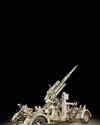
Scourge of the Allied Fighters
IT HAD TO BE THE MOST HELPLESS FEELING in the world: you're at 25,000 feet over Europe knowing that your primary function is to drop bombs-or flying escort for the bombers while being a slow-moving target for some of the world's finest shooters. However, you have John Browning's marvelous .50 caliber invention to give some degree of protection. Unfortunately, you're absolutely helpless against flak. Piloting and gunnery skills play no role in a game where sheer chance makes life and death decisions. For that reason, the Krupp 88 mm Flak 18/36/37 AA cannon could be considered WW II's ultimate stealth fighter. You never saw it coming.
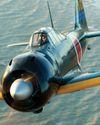
ZERO MYTH, MYSTERY, AND FACT
A test pilot compares the A6M5 Zero to U.S. fighters